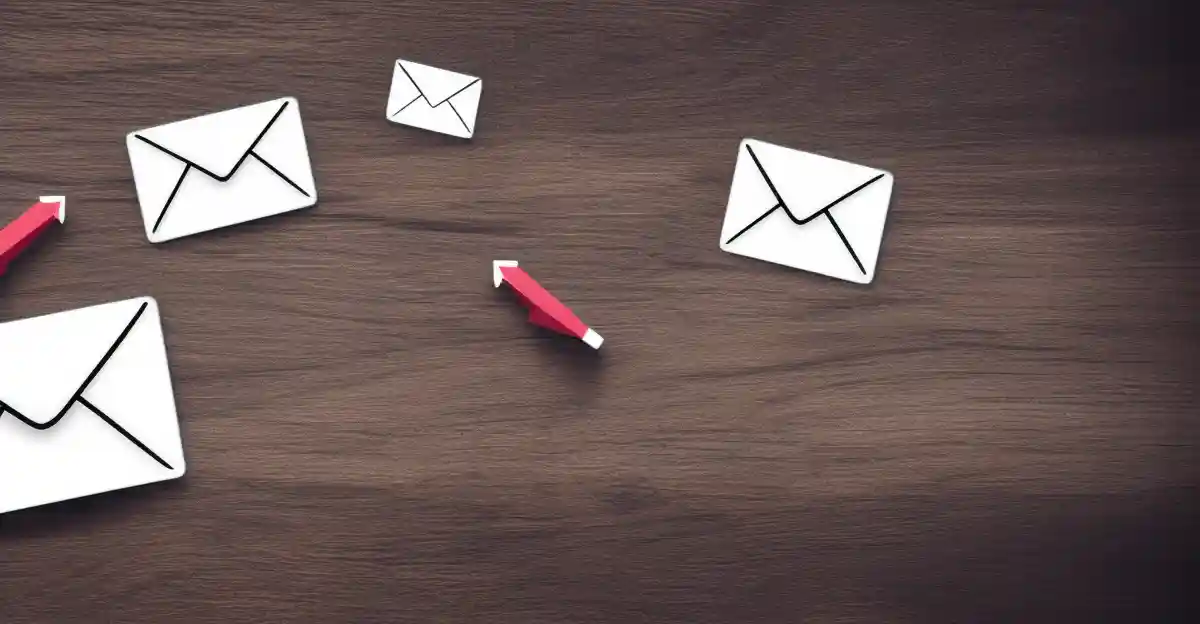This May Also Grab Your Attention:
Understanding Email Bounce Rates and How to Reduce Them
Types of Email Bounces and How to Address Them
Email marketing is a powerful tool that lets businesses reach out to their audiences in a personalized manner. However, not all emails are delivered successfully. Sometimes, emails don’t get delivered at all due to various reasons. This is where email bounces come into play.
Email bounces occur when the email you’ve sent fails to reach its intended recipient. There are two types of email bounces: hard bounces and soft bounces.
Hard Bounces
Hard bounces occur when the email you’ve sent fails to reach its intended recipient permanently. When an email address doesn’t exist anymore or has been deactivated, email servers will send a hard bounce notice to the sender. This usually happens due to the following reasons:
- The email address does not exist anymore.
- The email address is invalid.
- The email server has blocked incoming emails from your server.
Soft Bounces
Soft bounces, on the other hand, occur when the email you’ve sent fails to reach its intended recipient temporarily. Causes of soft bounces often include:
- The recipient’s email inbox is full.
- The email size exceeds the limit of the recipient’s email service.
- The recipient’s email server is down.
How to Address Email Bounces
Now that we know the types of email bounces, let’s look at how to address them.
Hard Bounces
When you receive a hard bounce notification, remove the email address from your mailing list. Continuing to send emails to a permanently invalid email can harm your sender reputation and may result in your emails being marked as spam.
Soft Bounces
If you receive a soft bounce notification, wait for a few days then try resending the email again. If the issue persists, it’s best to remove the email from your mailing list to avoid email servers flagging your emails as spam due to repeated unsuccessful delivery attempts.
Another solution for soft bounces is to try and understand why the email didn’t get delivered. Perhaps the email is too large, the recipient’s email inbox is full, or the email was filtered as spam. You can troubleshoot these issues by:
- Reducing the email size by compressing images and files.
- Asking the recipient to clear their inbox or providing them with a link to access the content elsewhere.
- Avoiding spam keywords in your email’s subject line and body.
Conclusion
Email bounces are a common issue that every business encounters when sending marketing emails. Understanding the types of bounces and how to address them is important in maintaining a healthy email sender reputation and achieving successful email delivery rates. Remember, removing invalid or unresponsive emails from your mailing list is a good practice to avoid harming your sender reputation and ensure that your emails reach their intended audience.
Looking At This Problem In A Different Light
Best Practices for Reducing and Managing Email Bounce Rates
In the world of social media marketing, email campaigns have always been a powerful tool for businesses to connect with their customers. But what happens when your email bounces? Not only does it hurt your open rate, but it also impacts your sender reputation, making it difficult for you in the long term.
In this article, we’ll go over the best practices for reducing and managing email bounce rates, so you can create campaigns that are more effective and improve your customers’ experience.
Use a Double Opt-In Process
The first step to reducing your bounce rate is to ensure that the emails you’re sending are valid and accurate. A double opt-in process is a way to confirm that a user has willingly subscribed to receive emails from you. This process involves sending a confirmation email after a user submits their email address, and the user has to click a link to confirm that they want to receive your messages.
This process ensures that you have valid contact information for your subscribers, which helps reduce the number of bounces.
You Might Want To Check This Out Too:
Keep Your Email List Clean
Another way to combat email bounces is to keep your email list clean. Regularly delete inactive subscribers and remove any emails that consistently bounce back. By keeping your list up-to-date, you’ll reduce the chance of sending emails to invalid or non-existent addresses.
Monitor Your Sender Reputation
Your sender reputation is a score assigned to you by email service providers that determines if your emails are trustworthy and reliable, or if they’re spam. If your emails consistently bounce, your sender reputation will drop, and your emails will be sent to the spam folder.
To keep your sender reputation intact, monitor your bounce rate and make changes as needed. Try segmenting your list, targeting your subscribers with personalized content, and providing a clear way for users to unsubscribe.
You May Also Be Interested In:
Use a Reliable Email Service Provider
Using a reliable email service provider is crucial in reducing your bounce rate. Look for a provider that offers authentication, list management tools, and spam filters. These features will help ensure that your emails are sent to valid addresses and that they’re not being marked as spam.
Test Your Emails Before Sending
Before you send out your campaign, test your emails to make sure they’re not being marked as spam. Send test emails to different email providers to ensure that your message is being delivered and that it’s not being sent to spam folders.
Keep Your Content Relevant
Finally, keep your content relevant to your audience. By providing personalized, valuable content, you’ll reduce the chance that your subscribers will mark your emails as spam or unsubscribe. Know your audience, and tailor your message accordingly.
In conclusion, reducing and managing email bounce rates doesn’t have to be difficult. By implementing the best practices listed above, you’ll be able to create effective campaigns that reach your subscribers without being marked as spam. Try these techniques today, and see the difference they can make!
Seeing This Matter In A Different Light Altogether
Why Email List Hygiene is Crucial for Lowering Bounce Rates
As a social media marketer, you know that email is still one of the most effective ways to communicate with your audience. However, if your email list is not properly maintained, you could be wasting your time and effort. One of the biggest problems that marketers face is high bounce rates. This is when the email that you sent out is returned because the recipient’s email address is no longer valid. Why does this happen, and what can be done about it? Let’s take a closer look.
Reasons for High Bounce Rates
There are a number of possible reasons why your emails may bounce. One of the most common reasons is that the email address is no longer active. This could happen because the recipient has changed their email provider, or they have stopped using that email address altogether. Another possibility is that the email is being blocked by a spam filter. This could happen if the email is flagged as spam or if the sender’s domain is on a blacklist. A third reason for high bounce rates is that the recipient’s inbox is full, and they are not able to receive any more emails.
The Importance of Email List Hygiene
To avoid high bounce rates, it is essential to maintain a clean and healthy email list. This means periodically cleaning out any inactive or invalid email addresses from your list. By doing this, you can ensure that your emails are being sent to active and engaged subscribers who are more likely to open and engage with your content. In addition, practicing good email list hygiene can help to improve your sender reputation, which can increase the chances that your emails will make it into the recipient’s inbox instead of being marked as spam or bounced back.
How to Maintain a Clean Email List
There are several steps that you can take to maintain a clean and healthy email list. First, regularly review your email list and remove any email addresses that have not engaged with your content in a significant period of time. This could mean that they have not opened any of your emails in the past six months or more. Second, make sure that you are only sending emails to people who have explicitly given you permission to do so. This means avoiding buying email lists or adding people to your list without their consent. Finally, use a reputable email service provider that has built-in tools and features to help you maintain a clean email list.
The Benefits of a Clean Email List
Maintaining a clean email list can have a number of benefits for social media marketers. First, it can help to improve engagement rates by ensuring that your emails are being sent to active and engaged subscribers. Second, it can help to improve your sender reputation, which can increase the chances that your emails will make it into the recipient’s inbox instead of being marked as spam or bounced back. Finally, it can help to save time and effort by ensuring that your emails are only being sent to people who are interested in your content, and not to invalid or inactive email addresses.
Conclusion
In conclusion, maintaining a clean and healthy email list is crucial for lowering bounce rates and improving engagement rates for social media marketers. By regularly reviewing and cleaning out your email list, and using only ethical and reputable email marketing practices, you can ensure that your emails are being sent to active and engaged subscribers who are more likely to open and engage with your content. So start taking steps today to maintain a clean email list and watch your bounce rates decrease and engagement rates increase.
Taking A Novel Approach To This Issue
Why Email Bounce Rates Matter for Your Business
As a business owner, one of the most crucial elements of your marketing strategy is your email campaign. Email marketing can help you nurture leads and drive conversions, making it an essential part of your overall marketing plan. However, if your emails aren’t reaching your subscribers, you’re wasting valuable time and effort.
Email bounce rates refer to the percentage of emails that are not delivered to the subscriber’s inbox. This might be because the email address is incorrect or the subscriber’s inbox is full. While a certain amount of bounce rates are normal, a high bounce rate can spell disaster for your email campaign.
In this article, we’ll explore why email bounce rates matter for your business and how you can take steps to reduce them.
The impact of high bounce rates on your business
A high email bounce rate can have a negative impact on your business in several ways. For starters, it means that your emails aren’t reaching their intended recipients. This translates to lost opportunities to engage with potential customers or provide value to your current ones.
Moreover, high bounce rates can damage your sender reputation, making it more difficult for your emails to reach inboxes in the future. Internet service providers (ISPs) use several metrics, including bounce rates, to determine whether an email is legitimate or spam. If your email campaign consistently has high bounce rates, your messages might be blocked or sent to the spam folder.
This Could Pique Your Interest As Well:
Additionally, high bounce rates can lead to a decrease in open rates and click-through rates. This is because your emails are likely not reaching the people who are most likely to engage with them. As a result, your overall email campaign metrics might suffer.
Causes of high bounce rates
There are several reasons why your email campaign might be experiencing high bounce rates. One of the most common is an outdated or invalid email list. Over time, email addresses might change, or subscribers might no longer be interested in your content. Regularly cleaning your email list and removing inactive subscribers can help reduce your bounce rates.
Another cause of high bounce rates is using a non-existent email address or an email account that’s no longer in use. This might happen if a subscriber made a typo when entering their email address or if they no longer use the email address associated with your email campaign.
Lastly, high bounce rates can occur if your email is flagged as spam. This might happen if your email content contains certain trigger words, or if you’re using a deceptive subject line. Ensuring that your emails comply with email marketing best practices can help reduce your bounce rates.
Ways to reduce email bounce rates
Reducing email bounce rates requires a proactive approach to email list management and compliance with email marketing best practices. Here are some steps you can take to reduce your email bounce rates:
- Regularly clean your email list: Remove inactive subscribers, update outdated email addresses, and remove invalid email addresses.
- Use double opt-ins: This ensures that subscribers confirm their email addresses, reducing the likelihood of typos or fake email addresses.
- Monitor your email campaign metrics: Track your bounce rates and open rates to identify any patterns or trends.
- Comply with email marketing best practices: Avoid using trigger words, deceptive subject lines, and sending unsolicited emails.
In conclusion, email bounce rates are a critical metric that can greatly impact the success of your email campaign. By regularly cleaning your email list, using double opt-ins, and complying with email marketing best practices, you can reduce your bounce rates and increase the effectiveness of your email marketing efforts. Ultimately, this translates to more engaged subscribers, higher open and click-through rates, and improved ROI for your business.
You May Also Be Interested In:
Author Profile

- 🌟 Greetings! I'm Tom, your trusted social media maestro. With a deep understanding of audience engagement and a knack for strategic planning, I'm here to help you unlock the full potential of your online presence. Let's collaborate and create a social media strategy that will make a lasting impact! 🚀
Latest entries
 Maximizing Audience Engagement On TwitterFebruary 27, 2024Tips For Scouting New Influencers And Keeping Your Campaign Fresh
Maximizing Audience Engagement On TwitterFebruary 27, 2024Tips For Scouting New Influencers And Keeping Your Campaign Fresh Maximizing Audience Engagement On TwitterFebruary 24, 2024How To Respond To Customer Feedback On Twitter
Maximizing Audience Engagement On TwitterFebruary 24, 2024How To Respond To Customer Feedback On Twitter Maximizing Audience Engagement On TwitterFebruary 23, 20243 Key Metrics To Look For When Measuring Influencer Effectiveness
Maximizing Audience Engagement On TwitterFebruary 23, 20243 Key Metrics To Look For When Measuring Influencer Effectiveness Creating A Strong Content Strategy For TwitterFebruary 21, 2024The Benefits Of Embracing Twitter Trends
Creating A Strong Content Strategy For TwitterFebruary 21, 2024The Benefits Of Embracing Twitter Trends



